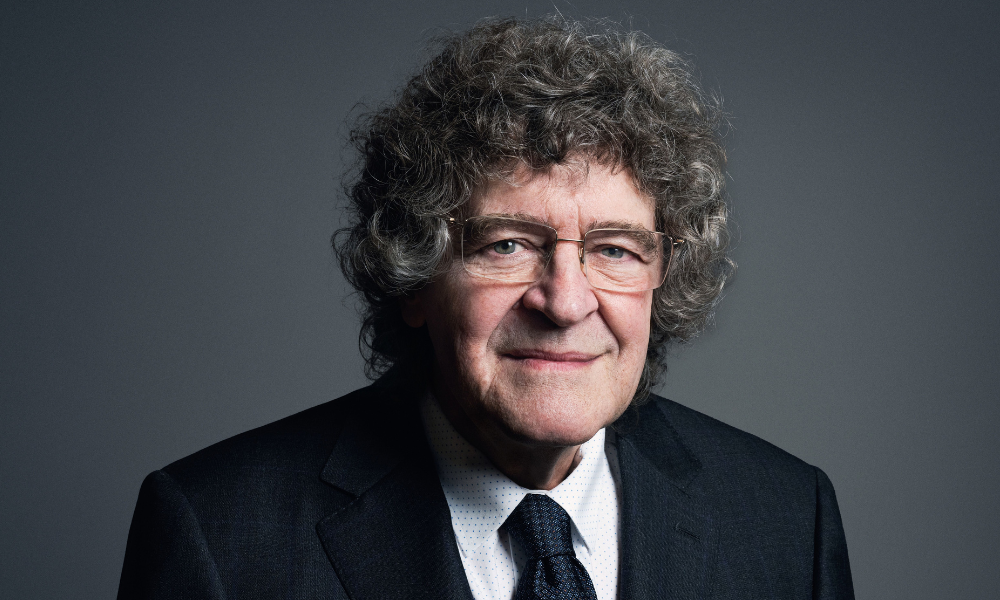While accident victims may sometimes have second thoughts after negotiating a settlement, the courts have demanded that there better be a good reason to set it aside once the parties have signed the deal.
 That’s the message from a recent case in which a woman decided she didn’t want to go ahead with a settlement following mediation. In it, an insurer asked Justice Peter Daley of the Ontario Superior Court of Justice to enforce a settlement after Paulet Morant indicated she wanted to resile from it.
That’s the message from a recent case in which a woman decided she didn’t want to go ahead with a settlement following mediation. In it, an insurer asked Justice Peter Daley of the Ontario Superior Court of Justice to enforce a settlement after Paulet Morant indicated she wanted to resile from it.
But the judge found no problem with the agreement and said that buyer’s remorse wasn’t a good reason to reverse it.
“Everybody, when they enter into a settlement, is going to have some misgiving,” says Hugh Scher of Scher Law PC.
So second guessing the agreement is normal. But the litigation can go on forever if there are no restrictions in place, he points out.
In Morant v. Sun Life Assurance Co. of Canada, Daley emphasized that the court would generally hold those involved in a settlement to its negotiated terms. The exceptions arise when the resulting agreement and settlement were unconscionable or fraudulent or they involved misapprehension of a material fact known to the other party; the solicitor didn’t have authority; or there’s an absence of the legal or mental capacity to enter into the settlement.
Scher refers to a current situation he’s dealing with in which a client with schizophrenia who heard voices and had hallucinations took directions from that voice. The resulting question in that situation is whether the client entered into the settlement voluntarily and had true legal capacity to agree to it in the first place.
In Morant, the plaintiff brought two motions following an accident in which she suffered injuries. She sought long-term disability support from Sun Life and statutory accident benefits from TD Insurance Meloche Monnex.
She also sought tort damages from TD because the driver and owner of the vehicle involved didn’t have insurance.
Mediation led to a settlement, but three weeks later Morant decided she was unhappy and sought to have it set aside. She had agreed to an all-inclusive sum of $110,000 with Sun Life for the long-term disability claim. She also settled with TD in relation to her claim for tort damages for the all-inclusive amount of $250,000.
“At its highest, the plaintiff has put forward evidence that she had a change of heart or what could be described as ‘buyer’s remorse’ approximately three weeks after the conclusion of the settlement of her claims with both insurers. This does not constitute proper grounds for the setting aside of a properly concluded settlement,” wrote Daley in his decision.
“While medical documentation was produced regarding the plaintiff’s medical history, no evidence was offered that would even suggest that the plaintiff was medically unfit at the time of mediation or that she did not have the capacity to enter into agreements with the defendants to settle these actions,” he added.
Mark MacNeill says the takeaway from this case is to ensure all of the documents related to mediation are complete and with signatures.
“Lawyers need to be on their game,” said MacNeill, a personal injury lawyer with Brauti Thorning Zibarras LLP.
He says a good practice for anyone going through mediation is to ensure they document the process.
The minutes of settlement outline what the parties agreed to and must do. A lawyer’s certificate indicating the legal advice given and that the client is of sound mind and understands the settlement is final is a good thing to have.
“The full and final release is the final linchpin” showing the lawyer explained the details of the settlement, he says. “It’s always a good idea to have the client sign the actual mediation agreement. You want to confirm those things in writing as soon as possible.”
While insurers have a sophisticated understanding of litigation and the implications of entering into a settlement agreement, Amelia Leckey says those precautions can go a long way. Lecky, a partner with Miller Thomson LLP, acts as defence counsel, typically for insurers.
She always ensures that when there’s a settlement resulting from mediation, she comes out with the minutes of settlement as well as a release that specifies the plaintiff had independent legal advice, including with respect to the releases executed by counsel for the plaintiff.
“If my client or I ever get the feeling that a plaintiff needs time to think about a settlement, we might be open to leaving the offer open for a limited period of time. In that case, settlement documents would not be signed,” says Lecky.
While there was a lack of direct evidence in Morant to demonstrate her desire not to proceed with the settlement, Lecky points to Morgan v. Saquing as an example where a change of heart could persuade a motions judge not to enforce a deal.
“In Morgan v. Saquing, the outcome was quite different when the plaintiff swore an affidavit in support of a motion to set aside a tort settlement. Of course in Morgan, the plaintiff asserted there had been a mistake in the settlement or more specifically that he had read the wording of the [handwritten] minutes of settlement incorrectly,” says Lecky.
“The fact is that, subject to being able to prove duress, fraud, or incapacity, it is very hard to have a signed settlement set aside, especially when all parties were represented by counsel.”
Settler’s remorse is inevitable for a plaintiff after making a deal, says lawyer Daniel Reisler. He acted for Noel Morgan in the 2009 hearing before the Ontario Superior Court of Justice. The case itself is still before the courts with a trial scheduled for this month.
In the 2009 hearing, Morgan claimed he had misinterpreted part of the handwritten direction as a cooling-off period of 30 days, something the judge accepted.
“They [plaintiffs] legitimately feel they are under a lot of pressure,” says Reisler.
“It’s very important that counsel understand that their client has to be comfortable,” he adds, suggesting a cooling-off period “generally would be a good idea in arbitration” for both accident-benefit and tort claims.
Gregory Chang, a partner at Bougadis Chang LLP who acts for plaintiffs, says educating clients throughout the process goes a long way in helping them feel more comfortable with both the mediation and any resulting settlement.
“Usually, I find that clients are quite eager to proceed to mediation,” he says. “It’s sort of a natural point to go talk about the file. As a practice point, solicitors are aware, or should be aware, that buyer’s regret is a possibility.”
While the insurer as defendant has a range to work within and has lots of experience with negotiation, the client will typically only have one case that at that point in life is all consuming. Constant communication leading up to mediation about who will be there and what they will be doing as well as through the settlement process in terms of what to expect from both sides and how it may unfold helps the client become more comfortable and can avoid the anxiety that can lead to settler’s remorse.
Preparation with clients can answer many of their questions, says Chang. And the lawyer can get a good sense of where the client may want to go with the settlement.
“There really shouldn’t be an element of surprise,” he says.
 That’s the message from a recent case in which a woman decided she didn’t want to go ahead with a settlement following mediation. In it, an insurer asked Justice Peter Daley of the Ontario Superior Court of Justice to enforce a settlement after Paulet Morant indicated she wanted to resile from it.
That’s the message from a recent case in which a woman decided she didn’t want to go ahead with a settlement following mediation. In it, an insurer asked Justice Peter Daley of the Ontario Superior Court of Justice to enforce a settlement after Paulet Morant indicated she wanted to resile from it.But the judge found no problem with the agreement and said that buyer’s remorse wasn’t a good reason to reverse it.
“Everybody, when they enter into a settlement, is going to have some misgiving,” says Hugh Scher of Scher Law PC.
So second guessing the agreement is normal. But the litigation can go on forever if there are no restrictions in place, he points out.
In Morant v. Sun Life Assurance Co. of Canada, Daley emphasized that the court would generally hold those involved in a settlement to its negotiated terms. The exceptions arise when the resulting agreement and settlement were unconscionable or fraudulent or they involved misapprehension of a material fact known to the other party; the solicitor didn’t have authority; or there’s an absence of the legal or mental capacity to enter into the settlement.
Scher refers to a current situation he’s dealing with in which a client with schizophrenia who heard voices and had hallucinations took directions from that voice. The resulting question in that situation is whether the client entered into the settlement voluntarily and had true legal capacity to agree to it in the first place.
In Morant, the plaintiff brought two motions following an accident in which she suffered injuries. She sought long-term disability support from Sun Life and statutory accident benefits from TD Insurance Meloche Monnex.
She also sought tort damages from TD because the driver and owner of the vehicle involved didn’t have insurance.
Mediation led to a settlement, but three weeks later Morant decided she was unhappy and sought to have it set aside. She had agreed to an all-inclusive sum of $110,000 with Sun Life for the long-term disability claim. She also settled with TD in relation to her claim for tort damages for the all-inclusive amount of $250,000.
“At its highest, the plaintiff has put forward evidence that she had a change of heart or what could be described as ‘buyer’s remorse’ approximately three weeks after the conclusion of the settlement of her claims with both insurers. This does not constitute proper grounds for the setting aside of a properly concluded settlement,” wrote Daley in his decision.
“While medical documentation was produced regarding the plaintiff’s medical history, no evidence was offered that would even suggest that the plaintiff was medically unfit at the time of mediation or that she did not have the capacity to enter into agreements with the defendants to settle these actions,” he added.
Mark MacNeill says the takeaway from this case is to ensure all of the documents related to mediation are complete and with signatures.
“Lawyers need to be on their game,” said MacNeill, a personal injury lawyer with Brauti Thorning Zibarras LLP.
He says a good practice for anyone going through mediation is to ensure they document the process.
The minutes of settlement outline what the parties agreed to and must do. A lawyer’s certificate indicating the legal advice given and that the client is of sound mind and understands the settlement is final is a good thing to have.
“The full and final release is the final linchpin” showing the lawyer explained the details of the settlement, he says. “It’s always a good idea to have the client sign the actual mediation agreement. You want to confirm those things in writing as soon as possible.”
While insurers have a sophisticated understanding of litigation and the implications of entering into a settlement agreement, Amelia Leckey says those precautions can go a long way. Lecky, a partner with Miller Thomson LLP, acts as defence counsel, typically for insurers.
She always ensures that when there’s a settlement resulting from mediation, she comes out with the minutes of settlement as well as a release that specifies the plaintiff had independent legal advice, including with respect to the releases executed by counsel for the plaintiff.
“If my client or I ever get the feeling that a plaintiff needs time to think about a settlement, we might be open to leaving the offer open for a limited period of time. In that case, settlement documents would not be signed,” says Lecky.
While there was a lack of direct evidence in Morant to demonstrate her desire not to proceed with the settlement, Lecky points to Morgan v. Saquing as an example where a change of heart could persuade a motions judge not to enforce a deal.
“In Morgan v. Saquing, the outcome was quite different when the plaintiff swore an affidavit in support of a motion to set aside a tort settlement. Of course in Morgan, the plaintiff asserted there had been a mistake in the settlement or more specifically that he had read the wording of the [handwritten] minutes of settlement incorrectly,” says Lecky.
“The fact is that, subject to being able to prove duress, fraud, or incapacity, it is very hard to have a signed settlement set aside, especially when all parties were represented by counsel.”
Settler’s remorse is inevitable for a plaintiff after making a deal, says lawyer Daniel Reisler. He acted for Noel Morgan in the 2009 hearing before the Ontario Superior Court of Justice. The case itself is still before the courts with a trial scheduled for this month.
In the 2009 hearing, Morgan claimed he had misinterpreted part of the handwritten direction as a cooling-off period of 30 days, something the judge accepted.
“They [plaintiffs] legitimately feel they are under a lot of pressure,” says Reisler.
“It’s very important that counsel understand that their client has to be comfortable,” he adds, suggesting a cooling-off period “generally would be a good idea in arbitration” for both accident-benefit and tort claims.
Gregory Chang, a partner at Bougadis Chang LLP who acts for plaintiffs, says educating clients throughout the process goes a long way in helping them feel more comfortable with both the mediation and any resulting settlement.
“Usually, I find that clients are quite eager to proceed to mediation,” he says. “It’s sort of a natural point to go talk about the file. As a practice point, solicitors are aware, or should be aware, that buyer’s regret is a possibility.”
While the insurer as defendant has a range to work within and has lots of experience with negotiation, the client will typically only have one case that at that point in life is all consuming. Constant communication leading up to mediation about who will be there and what they will be doing as well as through the settlement process in terms of what to expect from both sides and how it may unfold helps the client become more comfortable and can avoid the anxiety that can lead to settler’s remorse.
Preparation with clients can answer many of their questions, says Chang. And the lawyer can get a good sense of where the client may want to go with the settlement.
“There really shouldn’t be an element of surprise,” he says.







